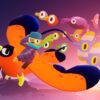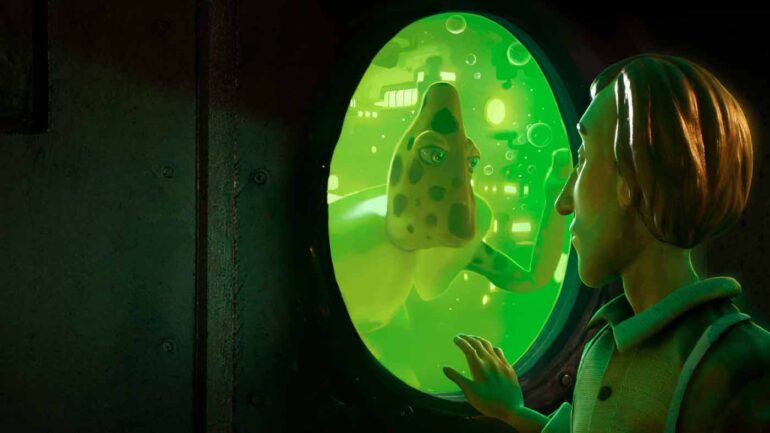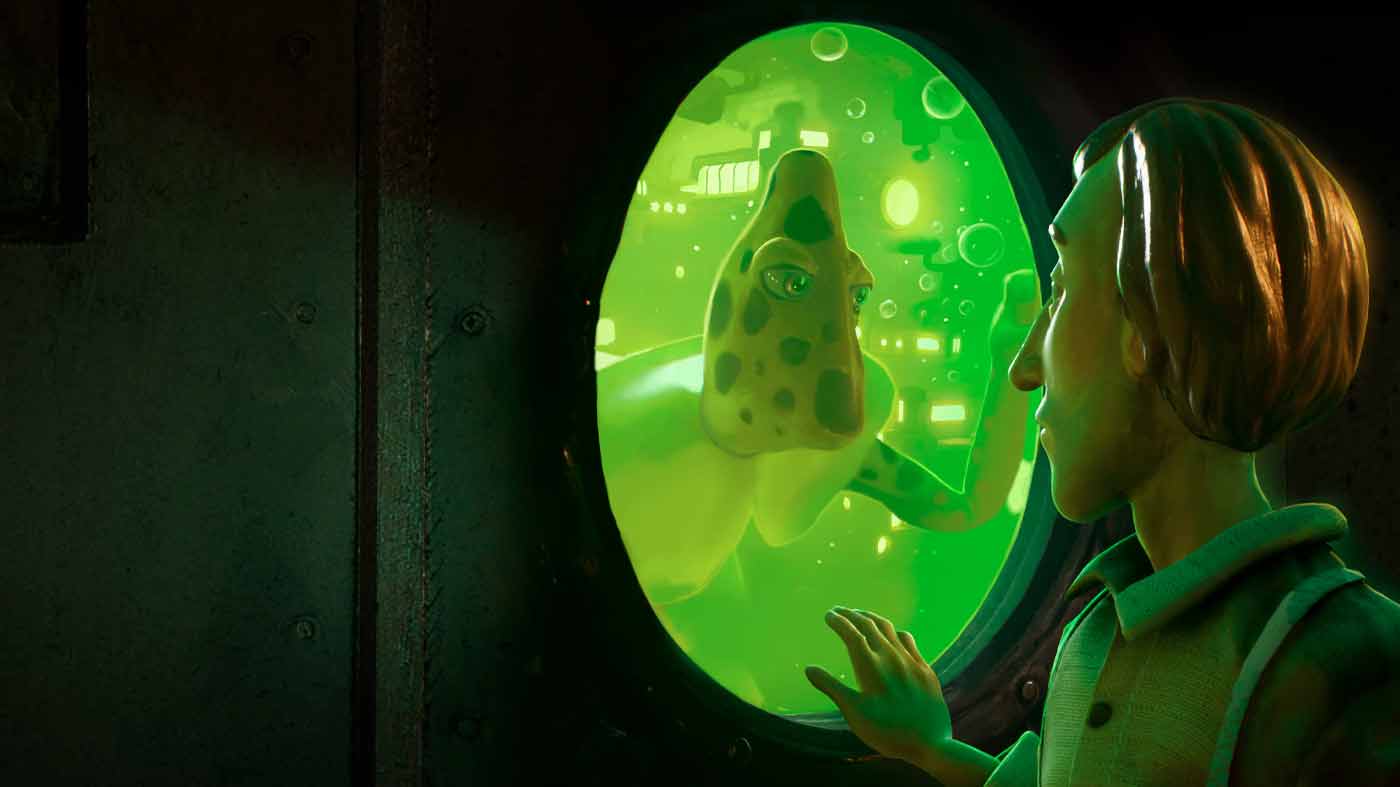A house is often built of brick and beam, though that isn’t the case for Harold Halibut, whose home, the only one he’s ever known, is a ship made up of steel and supports. A home, however, is more than that. It’s hope, it’s purpose, it’s a feeling, and the pursuit of it serves as perhaps the most pivotal theme at the centre of Slow Bros’ hand-crafted adventure aboard an ark-like spaceship.
The only home Harold has ever known is the Fedora I, a city in the stars serving as the last vestige for humankind after they fled a waning Earth to colonise the stars. It’s here he was born, and if the great minds aboard the Fedora can’t concoct a way to reignite the ship’s thrusters and continue their voyage out of the alien ocean they’re trapped in, it’s here that he’ll die. While that mission is a catalyst for Harold Halibut’s adventure, it’s his longing for purpose and a place to really call home that carry the emotional burden of the game’s heartfelt plot.
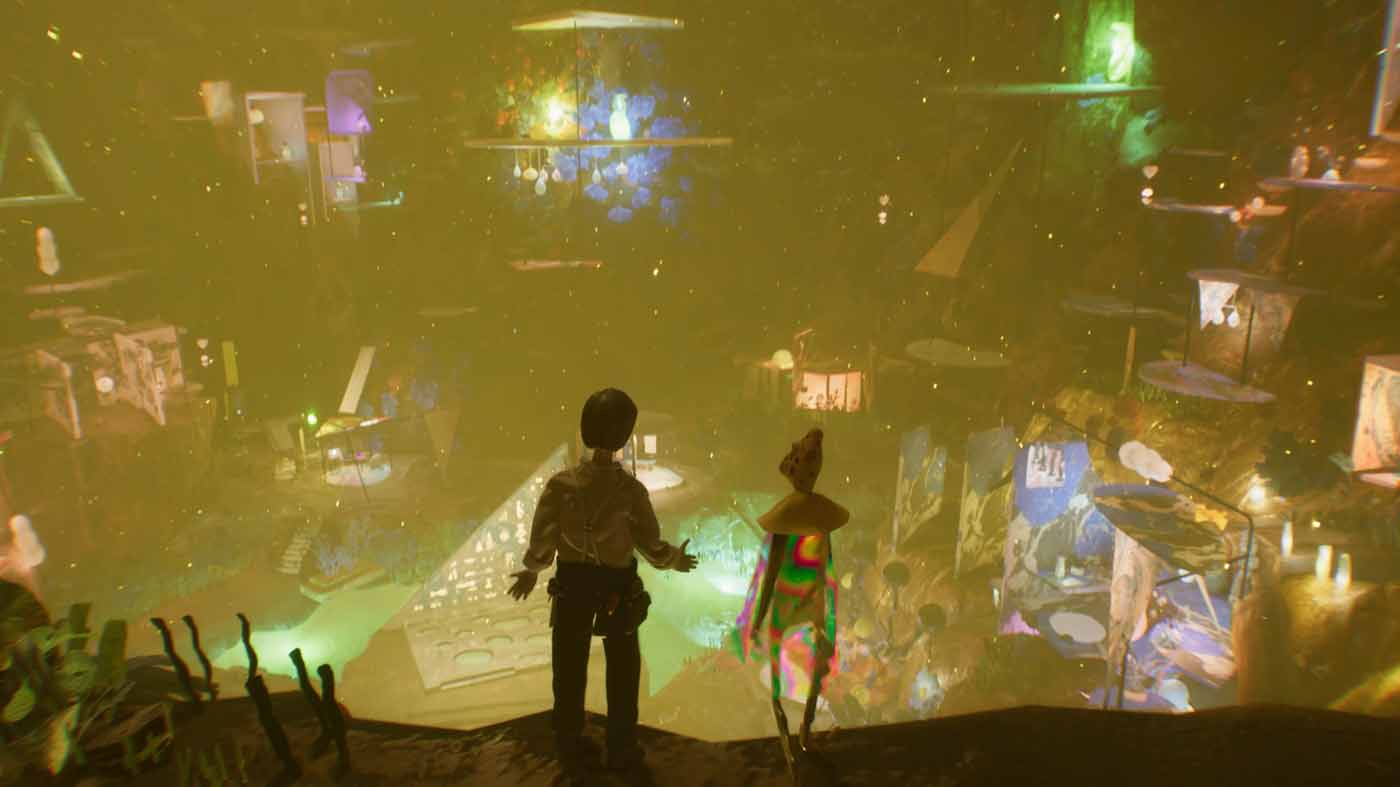
Harold, as a character, struck me as a fairly content and happy-go-lucky guy. He never seems intimidated by the fact his immediate circle aboard the ship are the community’s sharpest minds. He’s a bit of a fixer and follower who sleeps beneath a lab, and at times I got the sense there wasn’t a lot going on behind the eyes of Harold Halibut. Sure, he might log important life moments by drawing them in his diary with the proficiency of a preschooler, but he proves to have complexities in that he’s sensitive, innately caring, and longs for a grand purpose beyond the menial responsibilities he’s given. I think Harold’s journey, by the end, is one of satisfying growth and it was easy to root for him as an underdog.
The other characters who take refuge within the Fedora are also a largely endearing bunch by the end, even if they seem to take the mickey out of Harold for a bulk of his time in their company. Though they each have baggage, there’s one lad aboard that seems wholly good and that’s the station’s postmaster, Buddy. By the end, he’s really the grounding for Harold to introspect and his is a beautifully crafted story start-to-finish.
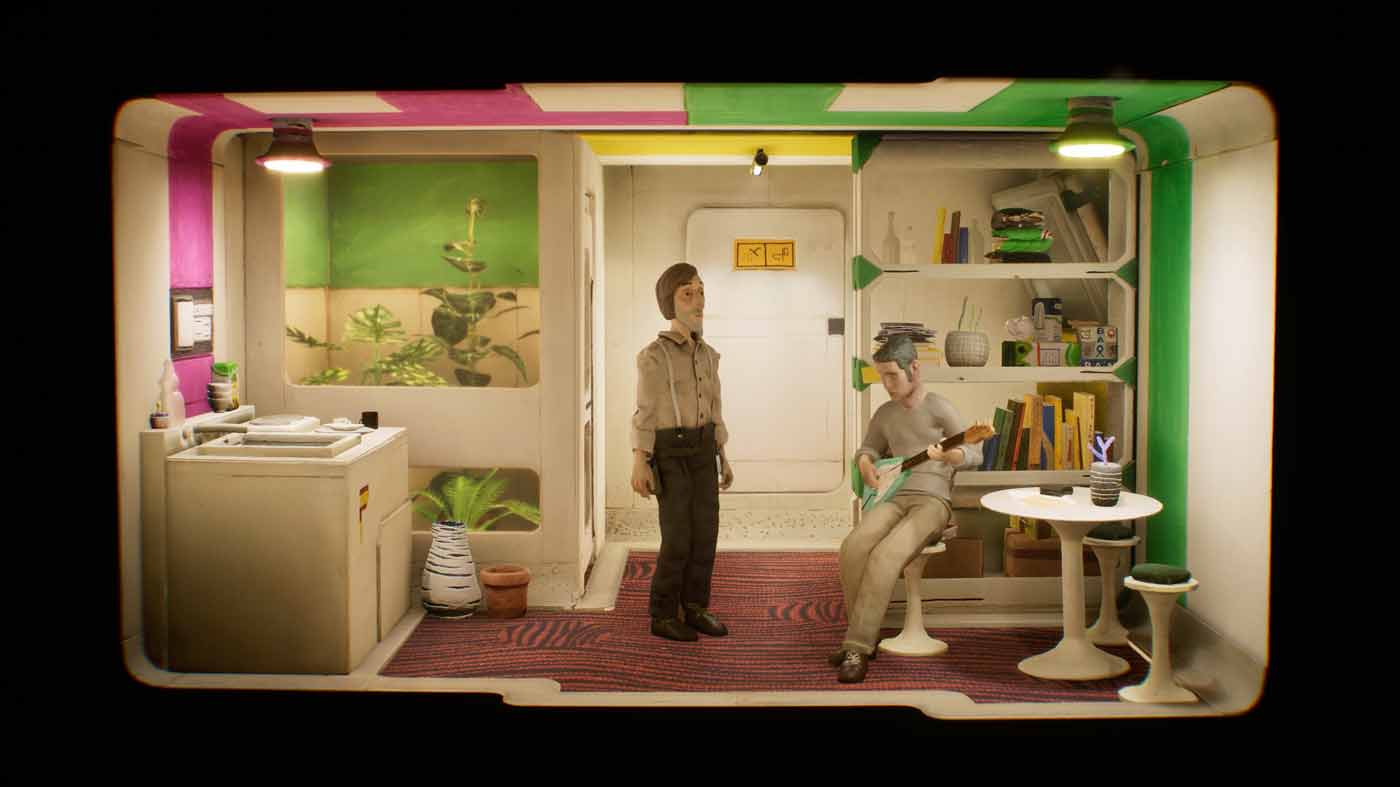
The first thing that’ll ensnare you right off the rip is that Harold Halibut’s gorgeously cinematic stop-motion aesthetic, complete with handmade assets from the characters to the sets, is a throwback to a classic era. I cut my teeth on adventure games like The Neverhood growing up and for this claymation style to find a place in video games once again, and to such great effect, is heartwarming. The Fedora itself is expertly realised and feels like a living diorama as you work from set to set, however it’s the oh-so-subtle imperfections on the characters, such as the missed spots of paint on Harold’s hair, that help create an authentic, artful escape.
In The Neverhood, and even films that use claymation, the illusion of the world is never broken because some poor artist adjusted each and every frame of the animation painstakingly by hand. With Harold Halibut, however, it’s clearer that what we’re dealing with is traditional, modern game animation where a model is scanned in, skinned onto a rig and, to be dangerously reductive, it’s job done. That’s not an issue, of course, work smarter, not harder. But as the team are beholden to the same technical niggles as everyone, the immersion fast shatters as we observe textures pop in, entire scenes render slowly, and the unnatural way that Harold ascends and descends staircases with a stride worthy of the Ministry of Funny Walks.
I suspect this is the downside of developing this game as a relatively freeing, exploratory experience while The Neverhood was more controlled with its point-and-click nature. That said, I never once found myself thinking this could have been done better, what the team has achieved with clay models remains a wonderfully bold feat of design that does separate Harold Halibut from its contemporaries.
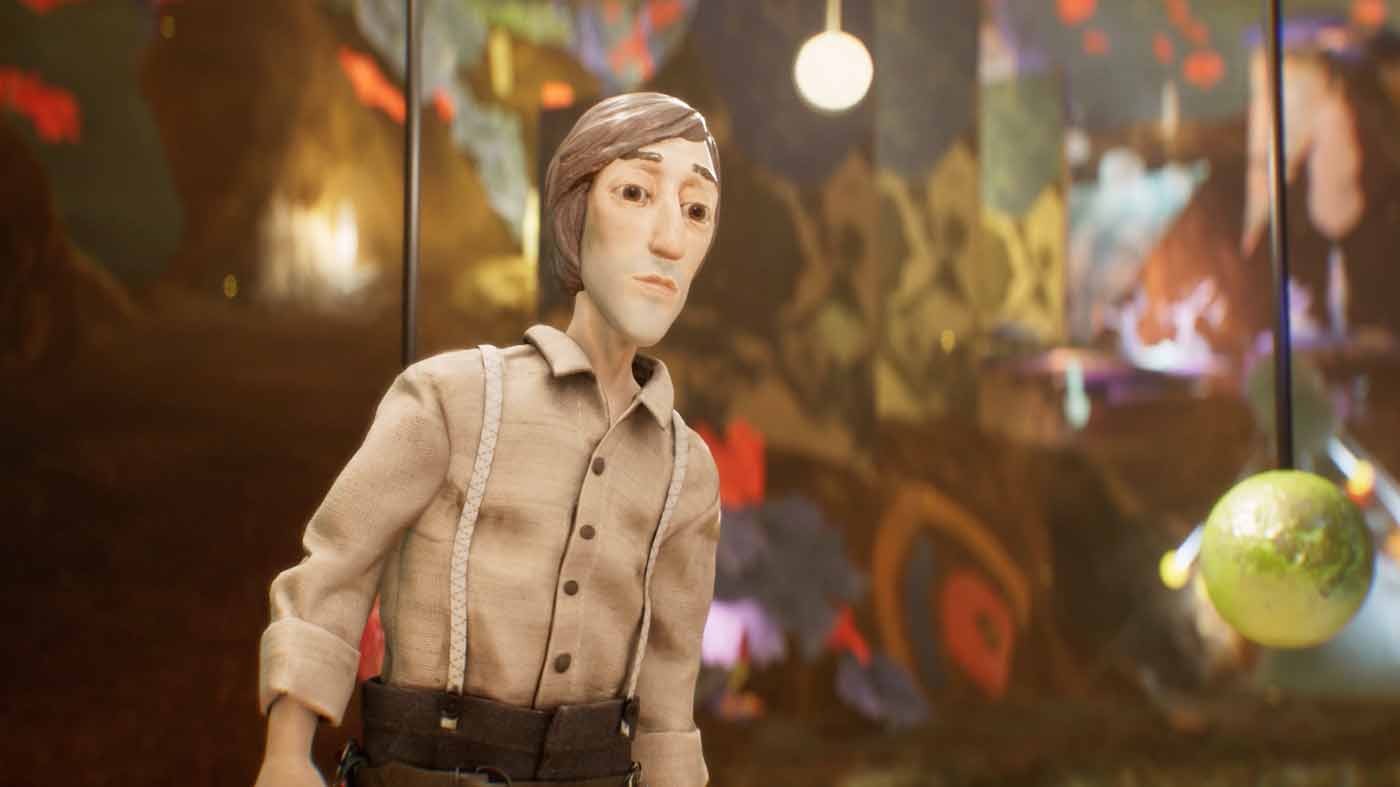
Unfortunately, it’s that game that Harold Halibut is beneath its pretty exterior that ends up falling relatively flat. One might think that, with the setting being a multi-storey city under the sea, things might get a little claustrophobic after a time, however it was simply the banality of the tasks you’re given that causes boredom to creep in. Fetching samples, checking in on fellow Fedorans, and delivering mail can get old quickly, even if the latter letters deliver some of the story’s more tender, meaningful beats. It might tie into the game’s themes of purpose and frittered potential though it does not make for a joyful experience.
So many times when Harold would go to seek help or rope someone in on a plan, they’d simply rebuff his offer and cause the story to pivot and go in an entirely different direction. In this sense, the design is a little odd and didn’t ever achieve a satisfying flow. You’re given a side task early on to find the Fedora captain’s pet bird and I’m convinced it’s not something you can actually seek out to do, rather it’s a scripted scene that simply happens to you. Briskly jogging through the Fedora’s halls from point A to B, off to C and back again, at no point feels rewarding as the novelty of the station’s set up, along with its mode of tubular transport, quickly wears thin.
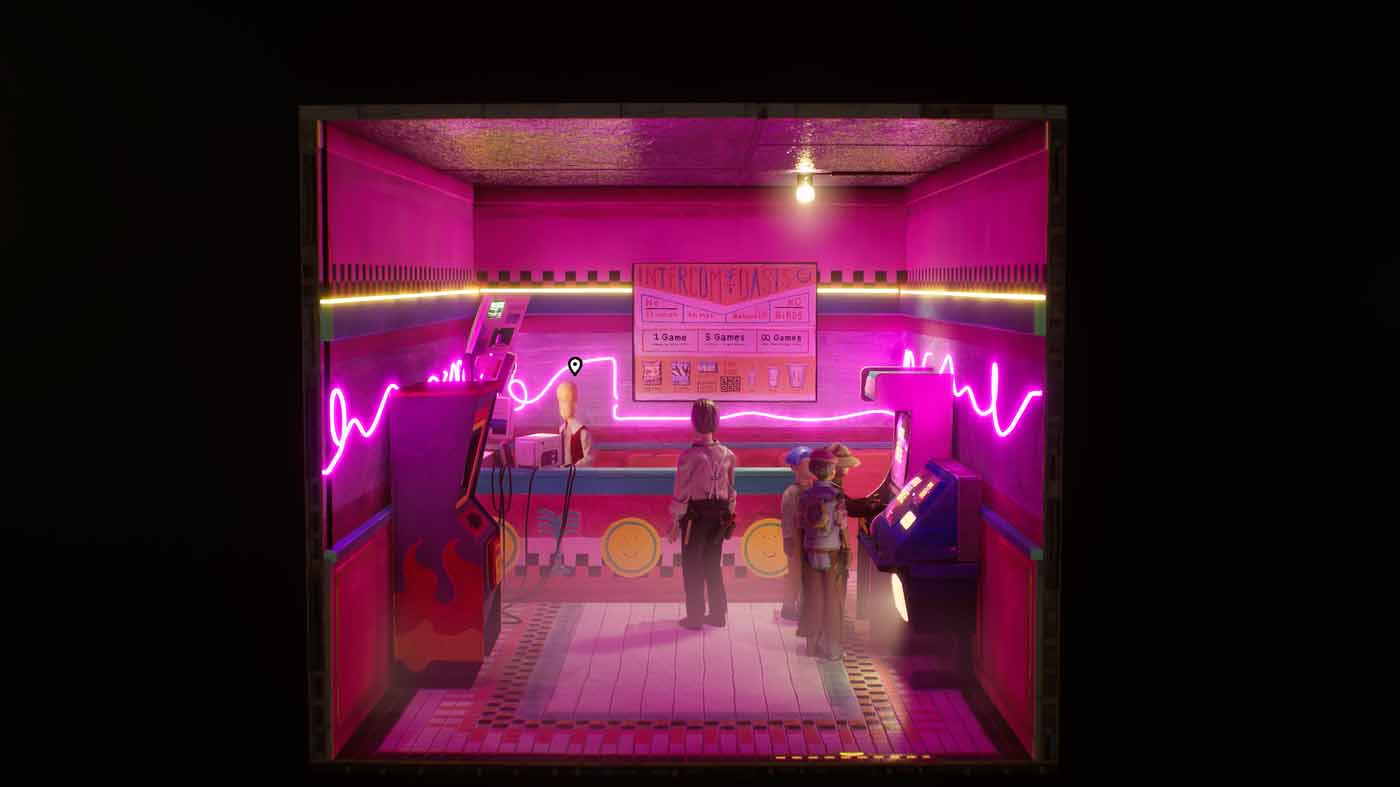
When the story arrives at its most tender or reflective beats, Harold Halibut’s score is a beautiful arrangement that moves from a soft, lonely piano to a haunting theremin that undoubtedly meets the science-fiction brief. It perhaps isn’t present enough to carry the whole narrative, but the moments it punctuated were certainly memorable.
From top to bottom, Harold Halibut has the disarming melancholy of a Wes Anderson film, it’s textbook indie, it’s textbook arthouse, too. It’s a wonderfully compact sci-fi tale about the call of home and purpose, however it takes place entirely within one of the most disappointingly sterile games I’ve played in some time. I wish the mechanics were up to standard with the absolutely gorgeous, homespun art that, on its own, justifies a decade of toil.
